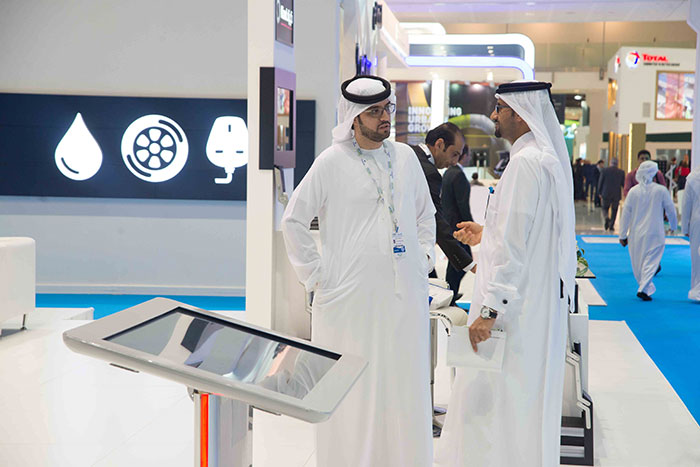Experts Call for Water Technology Innovation as GCC Braces for Dry Weather Conditions
 Other News
Other News Subscribe to newsletter
Subscribe to newsletter
| 13 Jan 2016 |
With the UAE’s high rate of water consumption, population growth, and increasing demand for irrigation water comes a great need for innovation in water technology to conserve resources, enhance water production, and manage demand, experts have urged ahead of the upcoming International Water Summit (IWS).

“The average water consumption in the UAE exceeds 350 liters per capita per day and is much higher than other developed countries. The country’s population has grown 7-fold between 1974 and 2008, and at the same time the agricultural land in the country has grown12-fold. The combination of these factors makes it crucial that we continue developing advanced technologies that will enable us to meet our growing water needs,” said Dr. Taha Ouarda, Head of the Institute for Water and Environment (iWater) and Professor of Water and Environmental Engineering at Masdar Institute.
Dr. Ouarda was speaking ahead of his presentation at IWS, which is hosted by Masdar and part of Abu Dhabi Sustainability Week.
Explaining the hydro-climatic relationship between water and climate, Dr. Ouarda said that the UAE climate is affected by a number of climate oscillation indices – changes in climatic systems. This results in high climatic variability, with some years characterized by high temperatures and minimal precipitation, which in turn has a significant implication on water supply.
“Higher temperatures result in increased evaporation from the Gulf and therefore increased water salinity, which then leads to less efficient performance of desalination plants, since more energy will be required to produce the same amount of water,” Dr. Ouarda said.
“Meanwhile, less rain translates into the availability of less fresh water reserves in our reservoirs (the UAE has more than 130 dams), and hence less groundwater recharge. So in terms of the overall water supply chain in the Gulf, everything gets affected,” he added.
Temperatures are expected to increase worldwide and in this region, with precipitation levels being highly affected by climate oscillations and reaching severe lows for some years. And with groundwater serving more than 50 percent of water needs in the UAE, preserving natural water reserves during these challenging climate conditions is becoming a growing priority.
Dr. Ouarda explained that what the region is currently witnessing is not climate change, but climate variability – the first indicates permanency, while the latter is temporary. The record low rainfalls observed in the year 2000 were, for instance, associated with the change of phase in a number of climate oscillation indices.
“We now know that what we are experiencing is a natural climate variation in which some years are cooler and others are warmer. Understanding the intricacies of these climate variables, from how much rain we are getting to changes in temperature, is critical to determining how water supply and demand is going to evolve over the coming years,” Dr. Ouarda said.
Although the numbers fluctuate year-on-year, it is estimated that groundwater provides about half of the UAE’s water demand, desalinated water supplies provide 37 percent, reclaimed water provides 12 percent and freshwater the remaining 1 percent.
Hydro-climatic modelling, in which the application of various techniques is used to estimate the fluctuating resources and optimize water management in response to changing climate conditions, plays a pivotal role in achieving water sustainability, says Dr. Ouarda.
One area where this is a strong need for greater efficiency in water use is the agricultural sector, which accounts for 34 percent of water consumed in the country. The remaining balance is distributed between domestic and industrial use (32%), forestry (15%), and amenities (11%). Losses account for around 8%.
“We need to look at how water is being used for agriculture – for example, enhancing irrigation so that it is more efficient, studying various species of plants that require less water intake, and improving the use of reclaimed water in irrigation and other sectors,” Dr. Ouarda said.
Optimizing water production and use, managing floods in times of extreme weather conditions, and understanding the impact of climate change on water resources in the region are among the topics Dr. Ouarda will be covering during his presentation at IWS on January 21.
“We are very lucky to be in a country with a prospering economy, but with that comes population and industrial growth, and therefore an increased demand for natural resources, such as water. However, I am confident that with our leadership’s vision and technological prowess, we will forge a sustainable future for the UAE,” Dr. Ouarda concluded.
IWS, hosted by Masdar and held in strategic partnership with the Abu Dhabi Water and Electricity Authority, takes place from 18-21 January at the Abu Dhabi National Exhibition Center and brings together world leaders, field experts, academia luminaries, and business innovators to accelerate the development of new sustainable strategies and technologies.




